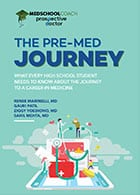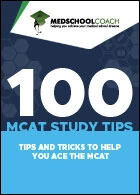
Throughout the U.S. and Canada, 72 medical institutions accept international students (49 MD programs and 23 DO programs).
The admissions process to U.S. medical schools is particularly challenging for international students for a few specific reasons:
- Many U.S. medical schools prioritize domestic applicants due to funding and policy constraints, meaning there are fewer available slots for international candidates.
- The accreditation and curriculum standards in the U.S. often require international applicants to complete additional coursework or degrees within the U.S. to ensure compatibility with their medical education standards.
- Logistical and legal factors, such as visa requirements and proof of financial resources, pose additional barriers for international students, making the application process more complex and competitive compared to domestic applicants.
That said, it’s absolutely possible to get into medical school in the U.S. or Canada if you currently live in another country.
That’s where we come in! We’ve compiled a list of allopathic and osteopathic programs in the U.S. and Canada that accept international students, plus a handy guide to successfully applying as an international premed. Check out our list of medical schools, or jump to the guide.
List of Medical Programs that Accept International Students in 2024*
| Degree Type | Institution/Program Name | City | State | Private or Public? | Out-of-State Tuition and Fees | Combined Degrees Offered | Requirements and Recommendations |
|---|---|---|---|---|---|---|---|
| MD | Frederick P. Whiddon College of Medicine at the University of South Alabama | Mobile | AL | Public | $67,349 | Not provided | |
| DO | Arizona College of Osteopathic Medicine | Glendale | AZ | Private | $76,397 | DO/MS, DO/MPH | |
| DO | California Health Sciences University College of Osteopathic Medicine | Clovis | CA | Private | $59,950 | Not provided | |
| MD | Stanford University School of Medicine | Stanford | CA | Private | $64,901 | MD/PhD, MD/MPH, MD/MBA, MD/JD | At least 1 academic year of study in the U.S., UK or Canada |
| MD | University of California, Davis, School of Medicine | Sacramento | CA | Public | $56,013 | MD/PhD | |
| MD | University of California, Los Angeles David Geffen School of Medicine | Los Angeles | CA | Public | $48,830 | MD/MPH, MD/MBA, MD/PhD | |
| DO | Western University of Health Sciences, College of Osteopathic Medicine of the Pacific | Pomona | CA | Private | $65,500 | Not provided | |
| DO | Rocky Vista University College of Osteopathic Medicine | Englewood | CO | Private | $62,080 | Not provided | |
| MD | University of Colorado School of Medicine | Aurora | CO | Public | $69,871 | MD/MBA, BS/MD, MD/MPH, MD/PhD | Must hold a bachelor’s degree prior to matriculation |
| MD | University of Connecticut School of Medicine | Farmington | CT | Public | $77,027 | MD/MBA, MD/MPH, BS/MD, MD/PhD | Must hold a bachelor’s degree prior to matriculation |
| MD | Yale School of Medicine | New Haven | CT | Private | $68,697 | MD/MPH, MD/MBA, MD/JD, MD/PhD | |
| MD | Howard University College of Medicine | Washington | DC | Private | $55,002 | MD/MBA, MD/PhD, BS/MD | Must have at least 71 semester hours from a U.S. or Canadian institution |
| DO | Lake Erie College of Osteopathic Medicine – Bradenton Campus | Bradenton | FL | Private | $38,395 | BS/DO | |
| DO | Nova Southeastern University Dr. Kiran C. Patel College of Osteopathic Medicine in Clearwater | Clearwater | FL | Private | $67,513 | B/DO | |
| MD | Emory University School of Medicine | Atlanta | GA | Private | $54,270 | MD/MBA, MD/MPH, MD/PhD | 32 semester hours of required science coursework must be taken at a regionally accredited U.S. or Canadian institution |
| MD | University of Hawaii, John A. Burns School of Medicine | Honolulu | HI | Public | $72,100 | Not provided | |
| DO | Chicago College of Osteopathic Medicine at Midwestern University | Downers Grove | IL | Private | $78,762 | BS/DO | |
| MD | Northwestern University The Feinberg School of Medicine | Chicago | IL | Private | $69,442 | MD/MPH, MD/MBA, MD/PhD | At least 3 years of coursework at U.S. or Canada institution required for application. Bachelor’s degree required upon matriculation. May make an exception to U.S. or Canada rule for institutions in the British Isles or Australia. |
| MD | University of Chicago Division of the Biological Sciences The Pritzker School of Medicine | Chicago | IL | Private | $60,258 | MD/MPH, MD/MBA, MD/PhD, BS/MD | At least 1 year of science related coursework at a U.S. or Canadian institution. If your premed requirements were taken outside of the U.S. or Canada, you should take a year of upper-level science courses in the U.S. or Canada. |
| MD | University of Illinois College of Medicine | Chicago | IL | Public | $82,957 | MD/MBA, MD/MPH, MD/PhD, BS/MD | At least 32 semester hours at a U.S. institution. Must also have a bachelor’s degree. If bachelor’s degree is from a university outside the U.S., it will be evaluated for equivalency by WES. |
| DO | Marian University College of Osteopathic Medicine | Indianapolis | IN | Private | $57,000 | Not provided | |
| MD | Tulane University School of Medicine | New Orleans | LA | Private | $71,262 | MD/MPH, MD/MBA, MD/PhD | Must have a bachelor’s degree by matriculation. U.S. bachelor’s degrees are highly recommended. |
| MD | Boston University Aram V. Chobanian & Edward Avedisian School of Medicine | Boston | MA | Private | $69,528 | MD/MPH, MD/JD, MD/MBA, MD/PhD | |
| MD | Harvard Medical School | Boston | MA | Private | $68,123 | MD/MPH, MD/MBA, MD/PhD | At least 1 year of study at U.S. or Canadian instutition. At least 3 years college coursework and a bachelor’s degree required. U.S. or Canadian bachelor’s degrees are highly preferred. |
| MD | Johns Hopkins University School of Medicine | Baltimore | MD | Private | $61,696 | MD/MBA, MD/PhD | |
| DO | University of New England College of Osteopathic Medicine | Biddeford | ME | Private | $64,160 | Not provided | |
| DO | Michigan State University College of Osteopathic Medicine | East Lansing | MI | Public | $61,838 | Not provided | |
| DO | Michigan State University College of Osteopathic Medicine in Clinton Township | Clinton Township | MI | Public | $61,838 | DO/PhD, DO/MBA | |
| DO | Michigan State University College of Osteopathic Medicine in Detroit | Detroit | MI | Public | $61,838 | DO/PhD, DO/MBA | |
| MD | Wayne State University School of Medicine | Detroit | MI | Public | $67,200 | MD/MBA, MD/PhD, BS/MD, MD/MPH | Must have bachelor’s degree Only accepts applications from Canadians and students who completed a bachelor’s degree at Wayne State University |
| MD | Saint Louis University School of Medicine | Saint Louis | MO | Private | $64,472 | MD/MBA, MD/MPH, MD/PhD, BS/MD | At least 30 semester hours at a U.S. or Canadian university |
| MD | Washington University in St. Louis School of Medicine | Saint Louis | MO | Private | $67,476 | MD/MBA, MD/MPH, MD/PhD | At least 90 semester hours at an accredited university Only accepts coursework from U.S., Canadian or American College Overseas institutions |
| DO | William Carey University College of Osteopathic Medicine | Hattiesburg | MS | Private | $46,000 | Not provided | |
| DO | Rocky Vista University – Montana College of Osteopathic Medicine | Billings | MT | Private | TBA | Not provided | |
| MD | Duke University School of Medicine | Durham | NC | Private | $68,440 | MD/MBA, MD/JD, MD/PhD | Must have completed a minimum of 2 years at a U.S. university |
| MD | University of North Carolina at Chapel Hill School of Medicine | Chapel Hill | NC | Public | $62,666 | Not provided | Must have a bachelor’s degree If obtained from outside the U.S., prerequisites must be taken at a U.S. institution prior to applying |
| MD | Geisel School of Medicine at Dartmouth | Hanover | NH | Private | $69,778 | MD/PhD | Minimum of 3 years at a U.S. or Canadian institution is required |
| DO | Rowan-Virtua School of Osteopathic Medicine | Stratford | NJ | Public | $67,452 | DO/PhD, DO/MBA, DO/MPH, DO/JD | |
| DO | Rowan-Virtua School of Osteopathic Medicine Sewell Campus | Sewell | NJ | Public | $67,452 | Not provided | |
| MD | Rutgers New Jersey Medical School | Newark | NJ | Public | $71,634 | MD/MBA, MD/MPH, BS/MD, MD/PhD | Must have a bachelor’s degree |
| MD | Albert Einstein College of Medicine | Bronx | NY | Private | $0 | MD/MPH, MD/PhD | |
| MD | Columbia University Vagelos College of Physicians and Surgeons | New York | NY | Private | $71,425 | MD/PhD | At least 1 year of premed at a U.S. university |
| MD | CUNY School of Medicine | New York | NY | Public | $69,572 | BS/MD | |
| MD | Icahn School of Medicine at Mount Sinai | New York | NY | Private | $63,365 | MD/MPH, MD/PhD | Must have bachelor’s degree If degree earned outside the U.S., taking coursework within the U.S. such as such as post-baccalaureate or graduate-level is highly recommended |
| DO | Lake Erie College of Osteopathic Medicine at Elmira | Elmira | NY | Private | $37,740 | BS/DO | |
| MD | NYU Grossman Long Island School of Medicine | Mineola | NY | Private | $3,950 | Not provided | |
| MD | NYU Grossman School of Medicine | New York | NY | Private | $3,950 | MD/MBA, MD/MPH, MD/PhD | |
| MD | Renaissance School of Medicine at Stony Brook University | Stony Brook | NY | Public | $69,336 | MD/MBA, MD/MPH, MD/PhD, BS/MD | |
| MD | State University of New York Upstate Medical University Alan and Marlene Norton College of Medicine | Syracuse | NY | Public | $66,703 | MD/MBA, MD/MPH, BS/MD, MD/PhD | At least 90 semester hours at a U.S. or Canadian university |
| MD | Weill Cornell Medicine | New York | NY | Private | $68,892 | MD/MBA, MD/PhD | |
| MD | Case Western Reserve University School of Medicine | Cleveland | OH | Private | $70,074 | MD/MPH, MD/JD, MD/MBA, MS/MD, MD/PhD | Has 2 MD programs named the University program and the College Program For the University Program: If graduated from a school outside of the U.S., must have 1 or 2 undergraduate or graduate years of science coursework at a U.S. university For the College Program: One degree (bachelor’s, master’s or PhD) must be earned at U.S. or Canadian university Applicants must have resided in the U.S. or Canada for 1 to 2 years |
| MD | McMaster University Michael G. DeGroote School of Medicine | Hamilton | ON | $28,203 | MD/PhD | ||
| MD | The University of Western Ontario – Schulich School of Medicine & Dentistry | London | ON | $25,528 | MD/PhD | ||
| MD | University of Toronto Temerty Faculty of Medicine | Toronto | ON | $91,760 | MD/MBA, MD/PhD | ||
| DO | Western University of Health Sciences, College of Osteopathic Medicine of the Pacific-Northwest | Lebanon | OR | Private | $62,916 | DO/MPH | |
| DO | Lake Erie College of Osteopathic Medicine | Erie | PA | Private | $37,740 | BS/DO | |
| DO | Lake Erie College of Osteopathic Medicine at Seton Hill | Greensburg | PA | Private | $37,740 | BS/DO | |
| MD | Perelman School of Medicine at the University of Pennsylvania | Philadelphia | PA | Private | $69,263 | MD/MBA, MD/JD, MD/MPH, MD/PhD | Minimum of 1 year of higher education at a U.S. or Canadian university and completion of prerequisites |
| MD | Sidney Kimmel Medical College at Thomas Jefferson University | Philadelphia | PA | Private | $62,514 | MD/MPH, MD/MBA, BS/MD, MD/PhD | Must have a bachelor’s degree from a U.S. or Canadian university |
| MD | University of Pittsburgh School of Medicine | Pittsburgh | PA | Private | $64,798 | MD/MPH, MD/PhD | Minimum of 1 year of higher education at a U.S. or Canadian university and completion of prerequisites |
| MD | Ponce Health Sciences University School of Medicine | Ponce | PR | Private | $68,887 | BS/MD | |
| MD | McGill University Faculty of Medicine and Health Sciences | Montreal | QC | $49,275 | MD/PhD | ||
| MD | Universite de Montreal Faculty of Medicine | Montreal | QC | $177,881 | Not provided | ||
| MD | Universite de Sherbrooke Faculty of Medicine | Sherbrooke | QC | $42,550 | Not provided | ||
| MD | The Warren Alpert Medical School of Brown University | Providence | RI | Private | $68,544 | BS/MD, MD/PhD | Minimum of 1 year of higher education at a U.S. or Canadian university and completion of prerequisites |
| MD | Vanderbilt University School of Medicine | Nashville | TN | Private | $66,509 | MD/JD, MD/MPH, MD/MBA, MD/PhD | Must have a bachelor’s degree Minimum of 1 year of higher education at a U.S. university highly recommended |
| MD | Anne Burnett Marion School of Medicine at TCU | Fort Worth | TX | Private | $63,034 | MD/MPH | |
| DO | Rocky Vista University College of Osteopathic Medicine – Utah Campus | Ivins | UT | Private | $62,080 | Not provided | |
| DO | Edward Via College of Osteopathic Medicine Virginia Campus | Blacksburg | VA | Private | $49,800 | Not provided | |
| DO | Liberty University College of Osteopathic Medicine | Lynchburg | VA | Private | $49,440 | Not provided | |
| MD | University of Virginia School of Medicine | Charlottesville | VA | Public | $63,464 | MD/MPH, MD/MBA, MD/PhD, MD/JD | 90 semester hours of coursework at a U.S. or Canadian university required Bachelor’s degree is strongly preferred |
| MD | West Virginia University School of Medicine | Morgantown | WV | Public | $66,231 | MD/MBA, MD/PhD | A minimum of 90 credit hours PLU.S. three years of higher education at the undergraduate or graduate level from an accredited U.S. or Canadian academic institution is required. |
Notes:
- Canadian students are not always considered the same as “international students.” Please contact the schools you’re interested in to ensure that you are eligible to apply.
- The MSAR database by AAMC specifies 70 total MD programs that accept Canadian students. The AACOM database of US osteopathic programs does not specify which institutions accept Canadian students but not other international applicants.
- Data is up to date as of December 2023. Allopathic programs were identified using the MSAR database by the AAMC (Association of American Medical Colleges). Osteopathic programs were identified using the ChooseD.O. Explorer by AACOM (American Association of Colleges of Osteopathic Medicine).
Related Read: What Are MD-PhD Programs? Overview & Program List
Challenges to Consider
If you’re an international student applying to a medical school in the U.S., you’ll face many challenges that differ from those of U.S. citizens. Here’s what to expect (and how to set yourself up for success):
Limited School Options
The challenge: Fewer than half of U.S. medical schools accept international students. This significantly narrows the pool of schools you can apply to.
What to do: Use tools like Med School Explorer and the MSC Score Calculator to identify the schools you’re most likely to get an acceptance from. These tools use your scores, unique experiences, and other factors to make sure you choose the best potential schools for your medical education.
Then, leverage your results from these tools to seek additional opportunities to enhance your credentials. These might include boosting your GPA or MCAT score, engaging in relevant research projects, gaining clinical experience, or undertaking volunteer work in healthcare settings.
This process can increase your chances of being accepted into your target medical school.
Additional Eligibility Requirements
The challenge: International applicants often need to meet extra criteria to apply at U.S. medical schools. This can differ by institution, but most often, schools will require you to:
- Take at least one year of prerequisite coursework at an American-accredited university.
- Demonstrate fluency in English, typically through the TOEFL exam.
Some institutions, like Boston University and George Washington University, require that all prerequisite courses or even your entire Bachelor’s degree be completed in the U.S. or Canada. The University of Rochester is even stricter, accepting only international students who have earned their undergraduate degree from their university.
Canadian students have an advantage — many U.S. medical schools consider Canadian degrees equivalent to U.S. ones, and some schools only accept Canadian international students.
The good news is that many top-tier medical schools, including Harvard, Johns Hopkins, and Stanford, accept international students with just the two basic requirements above.
What to do: You need to prepare early as a non-U.S. student interested in a United States institution — and we mean years early. As you near the end of high school, it’s a good idea to consider both where you’ll spend your undergraduate years and whether or not you need to brush up on your English language fluency over your freshman and sophomore years of college.
Not sure where to start? Talk to MedSchoolCoach about premed coaching. Our Physician Advisors will guide you through the requirements you’ll need to meet and how to best prepare to apply to med school.
Competitive Admissions
The challenge: The acceptance rate for international students is considerably lower compared to domestic students. In 2023, only 11% of international applicants were admitted to MD programs (143 students of 1297 applicants), compared to the 41.2% overall acceptance rate in the 2022/23 application cycle.
What to do: To be a competitive applicant, you’ll need a high GPA (grade point average) and MCAT score and a compelling application (which is true for all prospective med students).
Focus on excelling in your undergraduate courses, especially in the specific prerequisites you need to apply. When you prepare for the MCAT, consider private MCAT tutoring and give yourself at least 6 months to study before you take the exam.
When it’s time to apply to medical school, work with an experienced advisor to ensure every part of your application is complete and optimized for success.
For instance, the right advisor can help you write a personal statement that sets you apart. Admissions officers will be excited to read about your dreams of working in healthcare and how growing up in your home country has shaped you. A well-crafted personal statement will go a long way to helping you secure an interview and an acceptance.
Work with a Physician Advisor at MedSchoolCoach — our students are accepted to medical school at DOUBLE the rates of other students!
Financial Constraints
The challenge: Access to financial aid is limited for international students, and most applicants from other countries don’t qualify for federal student loans unless they are permanent residents of the U.S.. Some medical schools may require proof of financial resources to cover tuition costs before accepting you.
American medical schools aren’t cheap — it costs an average of $57,574 per year ($218,792 over four years) to attend medical school in the U.S..
What to do: Plan ahead for the financial requirements of medical school. In addition to saving money whenever possible, you should look for loans and scholarships for international medical students. The International Scholarships & Financial Aid (IEFA) database is a fantastic resource to find scholarships and loans that may apply to you.
Many schools, including some in the Ivy League, will consider students on a financial need basis and offer scholarships or institutional loans to help you cover the cost of attendance. You can also consider private loans to pay for medical school, although these should be a last resort.
Visa Restrictions
The challenge: International students must navigate visa restrictions, especially in relation to work and extracurricular activities. Certain research opportunities you pursue could qualify as work and interfere with your visa status.
What to do: Aim for undergraduate research projects on campus, rather than with private companies. Talk to your pre-health advisor before accepting scholarship funds for research.
Once you are accepted into medical school, focus on maintaining strong academic performance. Schools that welcome international students often have financial resources available for visa sponsorship during clinical rotations. Consistent performance is the best way to ensure you have access to those resources.
Transcript and Coursework Verification
The challenge: Transcripts from international institutions require verification or acceptance by an accredited U.S. or Canadian institution to apply to medical school via AMCAS (MD programs) or AACOMAS (DO programs).
One part of this verification process is converting international grades to a U.S.-equivalent GPA. Typically, if you’re transferring during undergraduate studies, schools will use an official conversion platform like WES (World Education Services) iGPA Calculator as part of your undergraduate application process.
What to do: Your next steps will depend on whether or not you’ll complete any part of your undergraduate degree in the States or not.
If you will complete your undergraduate degree in the U.S., contact your premed advisor or admissions office to find out what courses will be verified and transferred. Plan to retake any courses that cannot be transferred.
If you will not complete any part of your undergraduate degree in the U.S., contact the medical program(s) to which you plan to apply to learn where to verify your coursework and progress. They may recommend taking credits at a US institution to satisfy their prerequisite course requirements.
Many international students who already have a Bachelor’s degree complete post-baccalaureate programs to fulfill these requirements and strengthen their application.
MCAT Requirements
The challenge: All prospective med students, including International students, must take the MCAT (administered in English). This complex exam can be difficult for those who completed their undergraduate degrees outside the U.S. due to language barriers or differences in scientific standards and terminology.
What to do: Even well-prepared American students can benefit from MCAT tutoring, and this is doubly true for international students. An experienced MCAT tutor will help you identify high-yield topics to study and develop a plan based on your unique needs.
Our MCAT tutoring students score 12+ points higher on the MCAT. That many points can take your application to the next level — learn how we can help you.
Medical School Application Checklist for International Students
Follow these steps to give yourself the best chance at success when applying to medical school as an international student:
- English Fluency Practice – Take practice English fluency tests and brush up on your comprehension and speaking skills. Online language learning platforms like Duolingo, comprehensive online courses such as Coursera, attending local English language schools, and personalized instruction through tutoring services like iTalki, can help.
- MSAR Course Planning – Schedule your undergraduate courses based on the medical school admission requirements of U.S. schools using the MSAR database.
- U.S. Undergrad Transition – If you can, plan to attend a U.S. undergraduate school for your final 1-2 years (or more) to obtain your Bachelor’s degree. Contact the school to learn what coursework, if any, is unlikely to be transferred from your international school.
- On-Campus Research Focus – When in undergrad, pursue on-campus research projects and avoid research at private companies that might interfere with your visa status.
- Financial Planning for Med School – Plan early for how you’ll cover the financial investment of medical school. Seek out financial aid specifically for international premeds and contact your top school(s) to learn about scholarships they offer. Remember, your financial plan will likely need to be documented.
- MCAT Preparation Strategy – Keep your grades high, and plan to study for the MCAT for at least 6 months. Higher scores may be the deciding factor for your application. Consider working with a remote MCAT tutor who can work with you on the areas you need the most improvement.
- School Selection Analysis – Using your GPA and MCAT scores (or practice test scores), use the Medical School Chance Predictor to identify your “target” and “reach” schools. Compare those with the above list of medical programs that accept international students, and choose which schools to apply to based on where you’ll have the best chance of getting a “yes.”
- Application Advising Investment – Invest in application advising to ensure you don’t miss anything important on your medical school application.
In a hurry? Screenshot this checklist or bookmark the URL so you can come back to it later.
U.S. vs. International Medical School: Which Is Right for You?
When deciding whether a U.S. or international medical school is right for you, here are some practical steps to guide your decision:
- Assess your career goals: Reflect on where you want to practice medicine. If you want to work in the U.S., a U.S. medical school may offer more relevant training and networking opportunities. However, if you plan to work internationally or in your home country, an international medical school might be more aligned with your career path.
- Evaluate the financial implications: U.S. medical schools can be expensive, especially for international students. Compare the costs between U.S. and international schools, including tuition, living expenses, and available financial aid. (Some Caribbean medical schools offer U.S.-friendly medical degrees at a far lower cost, which may be an option to consider.)
- Examine admission requirements with your scores: U.S. medical schools often have stringent admission criteria for international students. Compare these with international schools to see where your qualifications may fit best.
- Research clinical experience opportunities: U.S. schools typically offer clinical rotations in U.S. hospitals, which could be advantageous if you plan to practice in the U.S. International schools might provide diverse clinical experiences, but ensure they are recognized by U.S. standards if you wish to practice there.
- Consider language and cultural aspects: If English isn’t your first language, attending a U.S. medical school could be challenging. But international schools may offer programs in other languages and a chance to immerse in a different culture.
- Look into residency match rates: Investigate the success rates of graduates from your target schools in securing residency positions, especially in the U.S., if that’s your goal.
- Seek guidance and mentorship: Connect with current students or alumni from both U.S. and international medical schools. Their insights can be invaluable in understanding the real-life implications of your choice.
- Reflect on your personal preferences: Consider your comfort with living abroad, adapting to new cultures, and being away from family and support systems.
- Review the long-term implications: Think about the long-term impact of your choice, including visa implications, potential for permanent residency, and where you envision your life and career in the next 10-20 years.
Have you decided that a U.S. medical program is the right choice for you? Schedule a free 15-minute consultation with MedSchoolCoach to find out how we can help give you an edge when applying in this competitive environment.

Sahil Mehta MD
Dr. Mehta is the founder of MedSchoolCoach and has guided thousands of successful medical school applicants. He is also a practicing physician in Boston where he specializes in vascular and interventional radiology.






